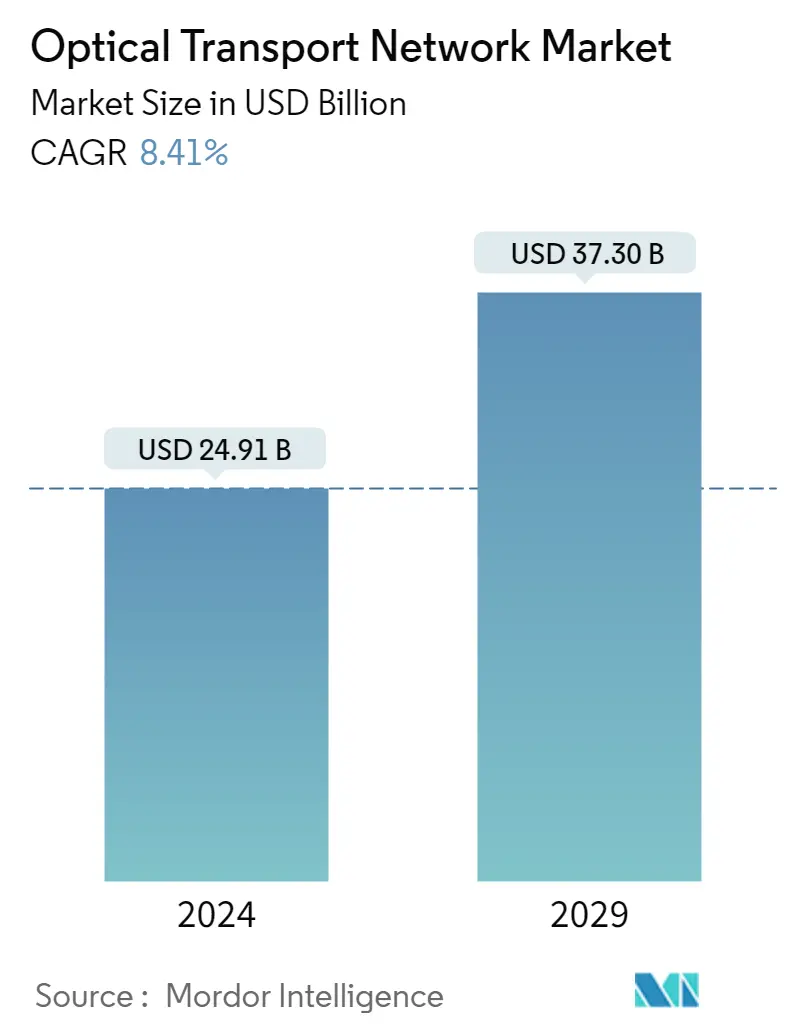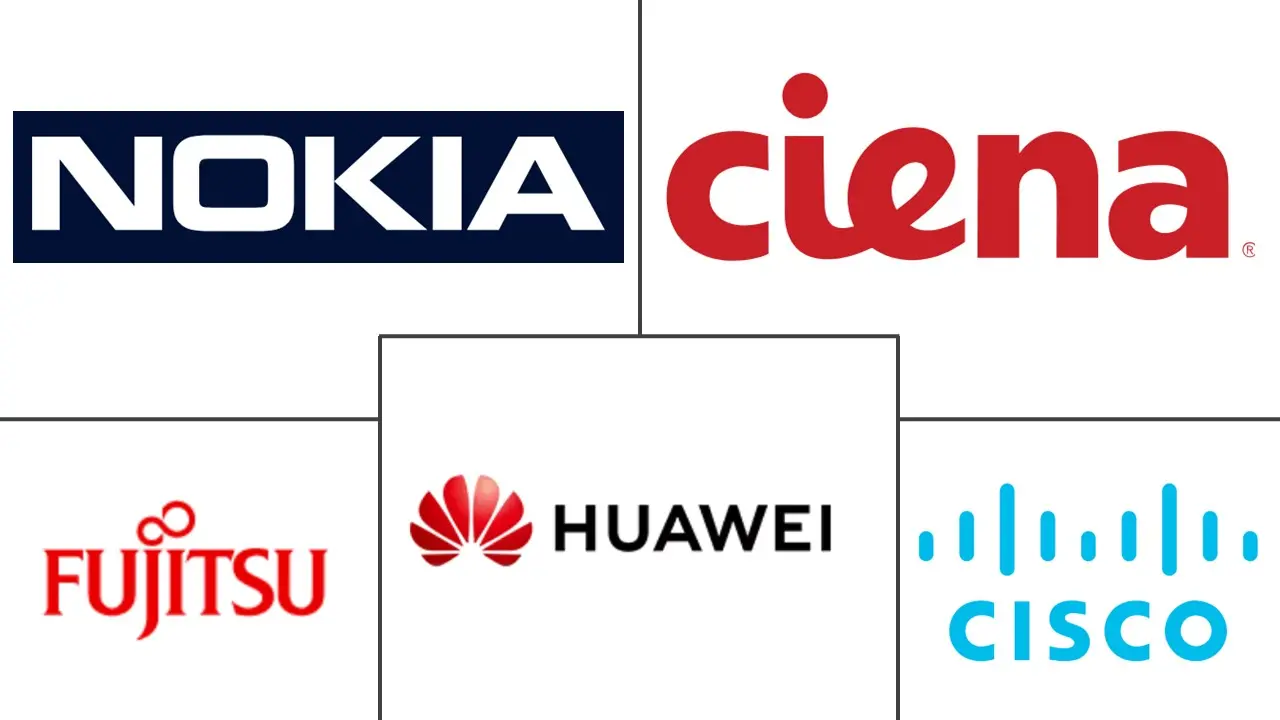Market Size of Optical Transport Network Industry

| Study Period | 2019 - 2029 |
| Market Size (2024) | USD 24.91 Billion |
| Market Size (2029) | USD 37.30 Billion |
| CAGR (2024 - 2029) | 8.41 % |
| Fastest Growing Market | Asia-Pacific |
| Largest Market | North America |
Major Players
*Disclaimer: Major Players sorted in no particular order |
Need a report that reflects how COVID-19 has impacted this market and its growth?
Optical Transport Network Market Analysis
The Optical Transport Network Market size is estimated at USD 24.91 billion in 2024, and is expected to reach USD 37.30 billion by 2029, growing at a CAGR of 8.41% during the forecast period (2024-2029).
The rapid increase in internet users at home and work has created a new network bandwidth demand. The increased popularity of online games, social networking, video conferencing, and other real-time streaming activities are expected to drive the demand for the market studied. One of the critical reasons for the optical transport network market's growth is that it delivers seamless data transfer while minimizing latency.
- Further, the continuing expansion of the cloud, the increase of data center capacity, and the quick deployment of 5G are driving network traffic and increasing demand for network capacity, which would significantly create an opportunity for the market studied to grow. For instance, according to Ericsson, 5G subscriptions are expected to increase globally between 2021 and 2025, rising from over 12 million to over 3 billion. Subscriptions are predicted to be highest in Northeast Asia, Southeast Asia, India, Nepal, and Bhutan.
- As cities become digital and smart, communication has become the fifth primary infrastructure network after water, electricity, gas, and transportation. The expansion of digital technologies and industries dictates how smart cities can be. The communications networks that support them have become an essential aspect of how cities may operate and offer services. As a result, more than 150 governments worldwide have announced fiber policies or internet initiatives, promising to make network infrastructure freely available to the public. Governments are providing tax breaks or subsidies to accelerate the construction of backbone networks, enhance network coverage, bridge the digital gap, and boost national economic development.
- For instance, according to the US-China Economic and Security Review Commission, government spending on smart city initiatives in China will reach USD 38.92 billion in 2023. Such developments in smart cities would increase the demand for optical transfer network solutions.
- The high initial investment in network equipment installation and maintenance is projected to hinder the expansion of the global OTN market. Furthermore, modern technologies, including 40G to 100G, can expedite handling data traffic and data transfer; however, these technologies are expensive. The significant capital investment leads to an extended payback period for the investment. Customers frequently give these projects to suppliers at a very low price, although their deployment takes years, notably in the telecom industry. As a result, the significant initial expenditure necessary to establish OTAs is expected to stifle worldwide market development for OTN equipment.
- As mobility limitations were imposed to control the spread of COVID-19, an increasing number of the OECD's estimated 1.3 billion citizens were working and learning from home. Critical international policy coordination, such as the G7 and G20, occurred online through various platforms. Fixed and mobile broadband operators, content and cloud providers, and places where internet networks join to exchange traffic, known as Internet exchange points (IXPs), are seeing up to 60% more Internet traffic than before the outbreak. These variables influenced the optical transport network market during and after the pandemic.
